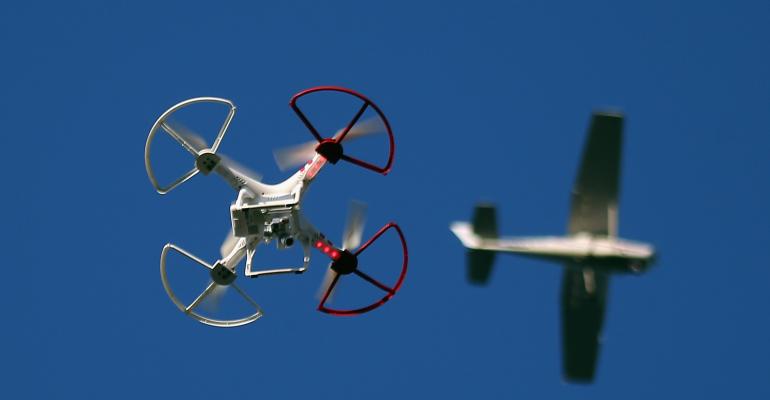Technology has been at the forefront of the resurgence of the industrial sector in the past few years, and soon the warehouse industry may get a boost from the use of automated inventory drones.
A recent report by commercial real estate services firm CBRE highlights new high-tech wonders, from virtual office design to the ubiquitous Pokemon Go! craze. No stranger to technology, the industrial sector has been using robots and automated RFID sorters to keep up with the soaring e-commerce demand, and there are efforts to change U.S. regulations to allow drones to carry these products directly to consumers.
Until the laws are changed, however, industrial space users are finding ways to incorporate drone use where it’s already legal—inside the warehouse itself. Supply chain experts have realized that a rectangular warehouse is a finite field that can be scanned and mapped for precise, automated drone flights. Thanks to advances in self-stabilizing gyroscopes, pilot programs at various firms are implementing automated drones for what’s called “cycle counting”: the continuous, mundane-but-necessary task of ensuring inventory is correct.
A task that can take hours or days, and a lot of labor by a human item checker can be made much more efficient by an automated drone programmed to read RFID tags, says Joe Dunlap, a managing director who heads the supply chain services division at CBRE. A flying drone also has a much easier climb than a human without having to expend energy and time using a lift, he adds.
“Not all companies are going to want to do this at their warehouses; there’s going to have to be a cost justification trade-off,” Dunlap says. “And it may not work well for companies that have volume of all different attributes. It’s difficult for automated systems to be programed to inventory items as varied as a small toothpick to, say, a king-size mattress; the items have to be somewhat uniform for automated adoption.”
The idea already has mainstream acceptance—Wal-Mart announced in June that it plans to start using drones to handle inventory issues at one or more of its many warehouses starting next spring. A vice president with the firm said that a task of checking inventory levels that takes employees a month could be knocked down to a day by using the machines. The drones can also be used as equipment inspectors, reaching areas and finding problems inaccessible to humans.
While drones are likely to be used only in large warehouses with enough room for safe operation at first, industrial property owners, tenants and developers will likely have to consider certain building requirements when factoring in the machines going forward, Dunlap says. Upper ceilings will have to remain clear and not cluttered by beams or HVAC equipment, shelves will have to be measured consistently and wireless transmissions will need monitoring to prevent signal interference.
“Multiple cut-up walls in a class-B building could cause a problem if the drone would have to navigate around physical walls, and could result in a crash from loss of radio frequency control,” Dunlap says. “The warehouse designs of the future will likely need to be clear, high and uniform to ease the drone flight path.”
The common use of drones won’t be seen for a number of years, Dunlap concedes, as it may still be cheaper to pay a worker $8.0 an hour than spend tens of thousands of dollars on high-tech gear that’s still not widely proven as efficient. “Change in the warehouse world will be incremental. It’s not going to be like watching the Jetsons where you push a button and everything is automated. You’re still going to need humans to handle the unpredictable product handling issues—at least for a little while longer,” he notes.

